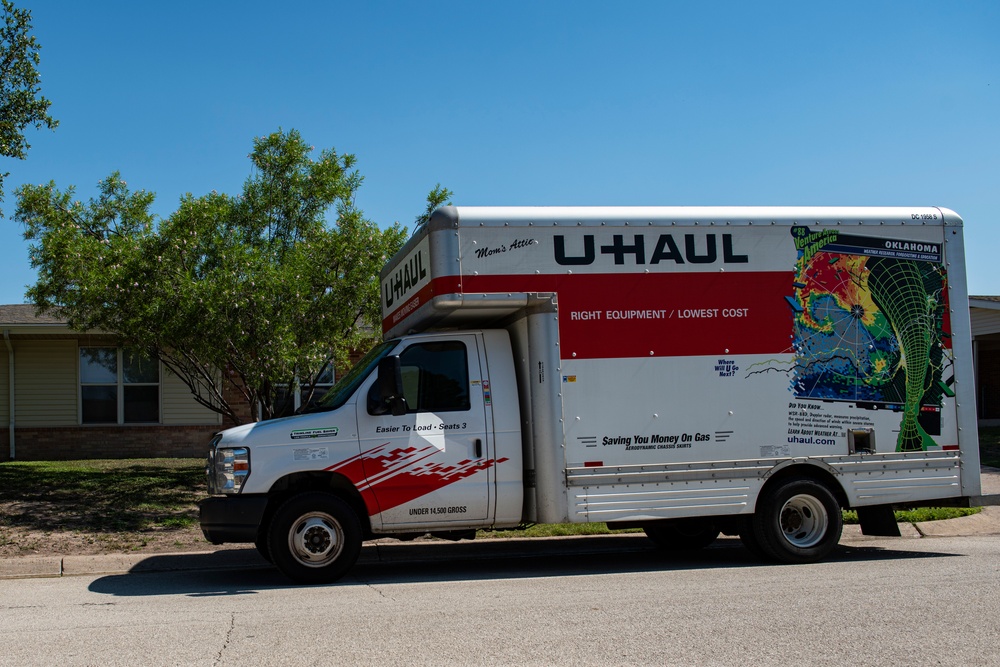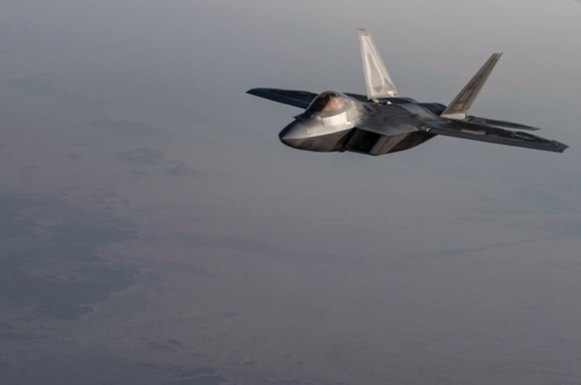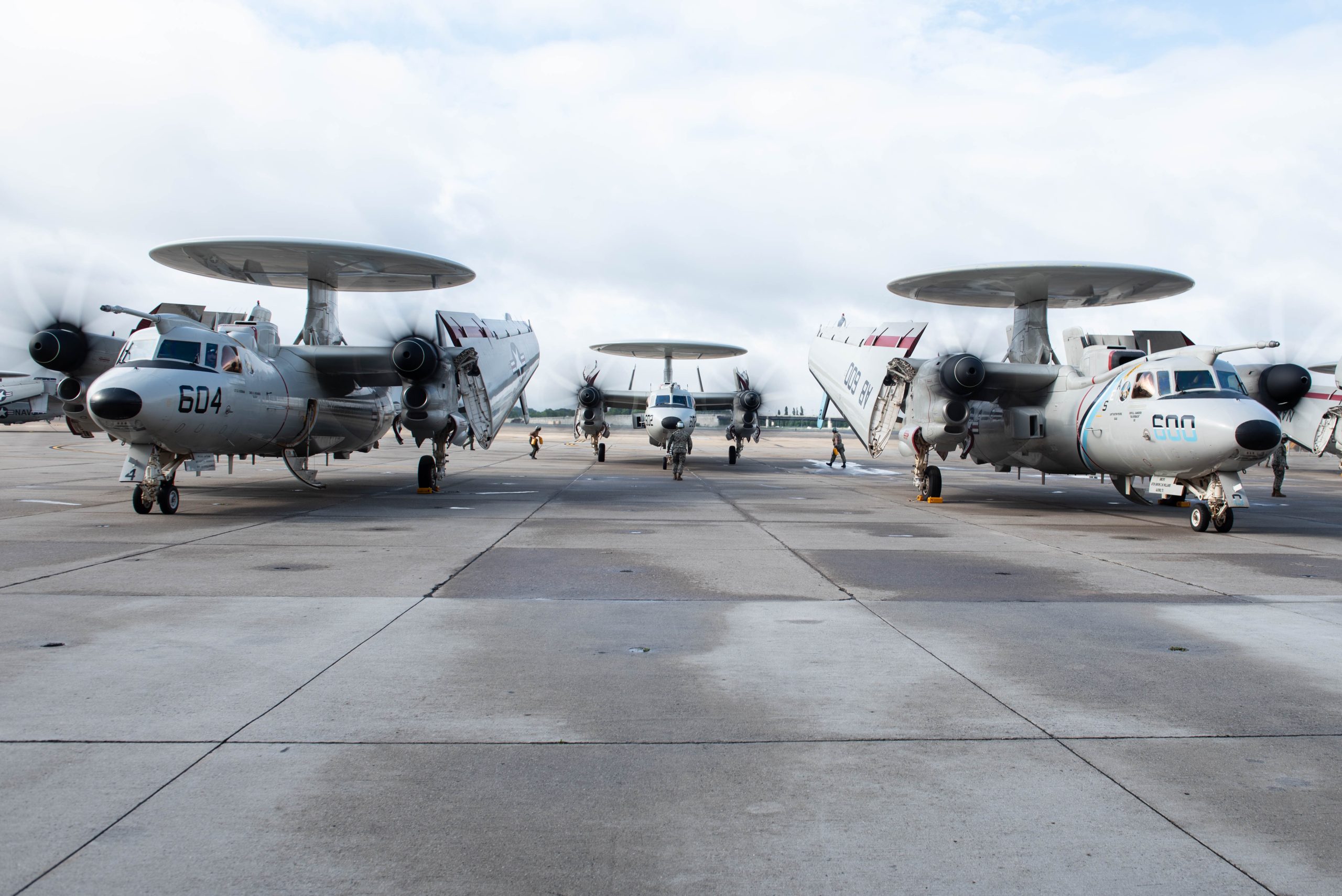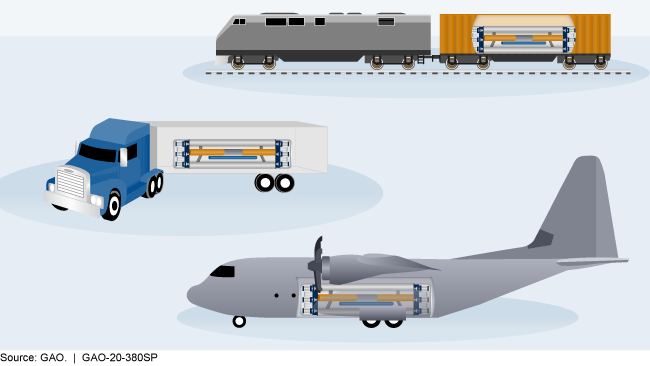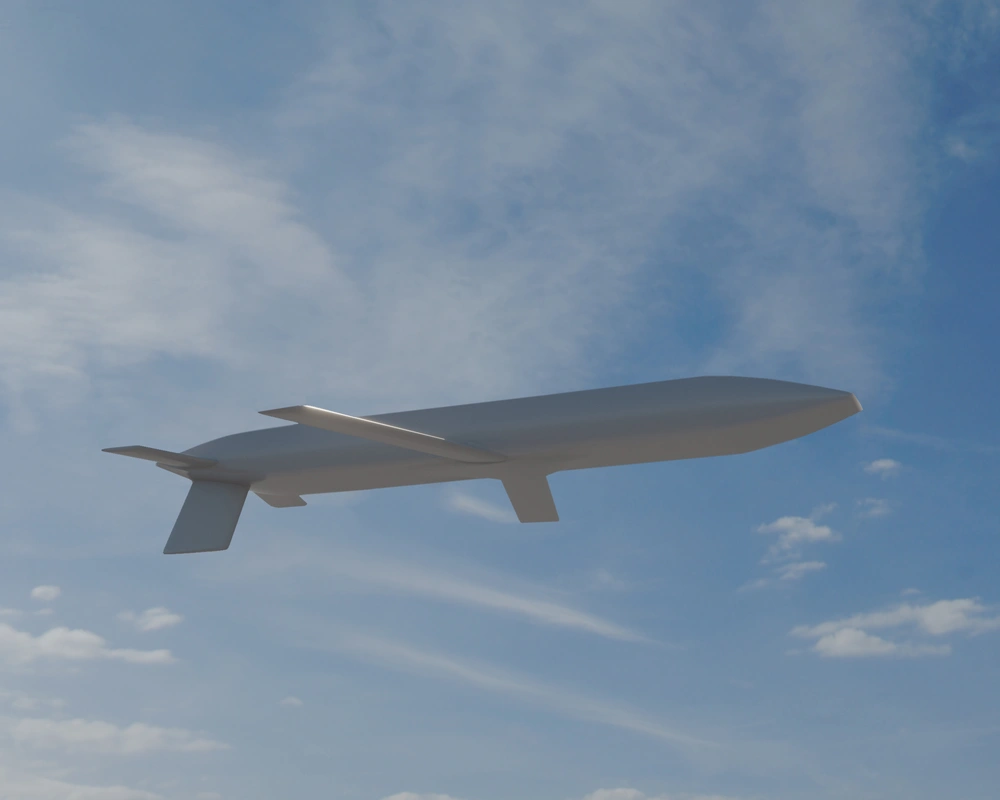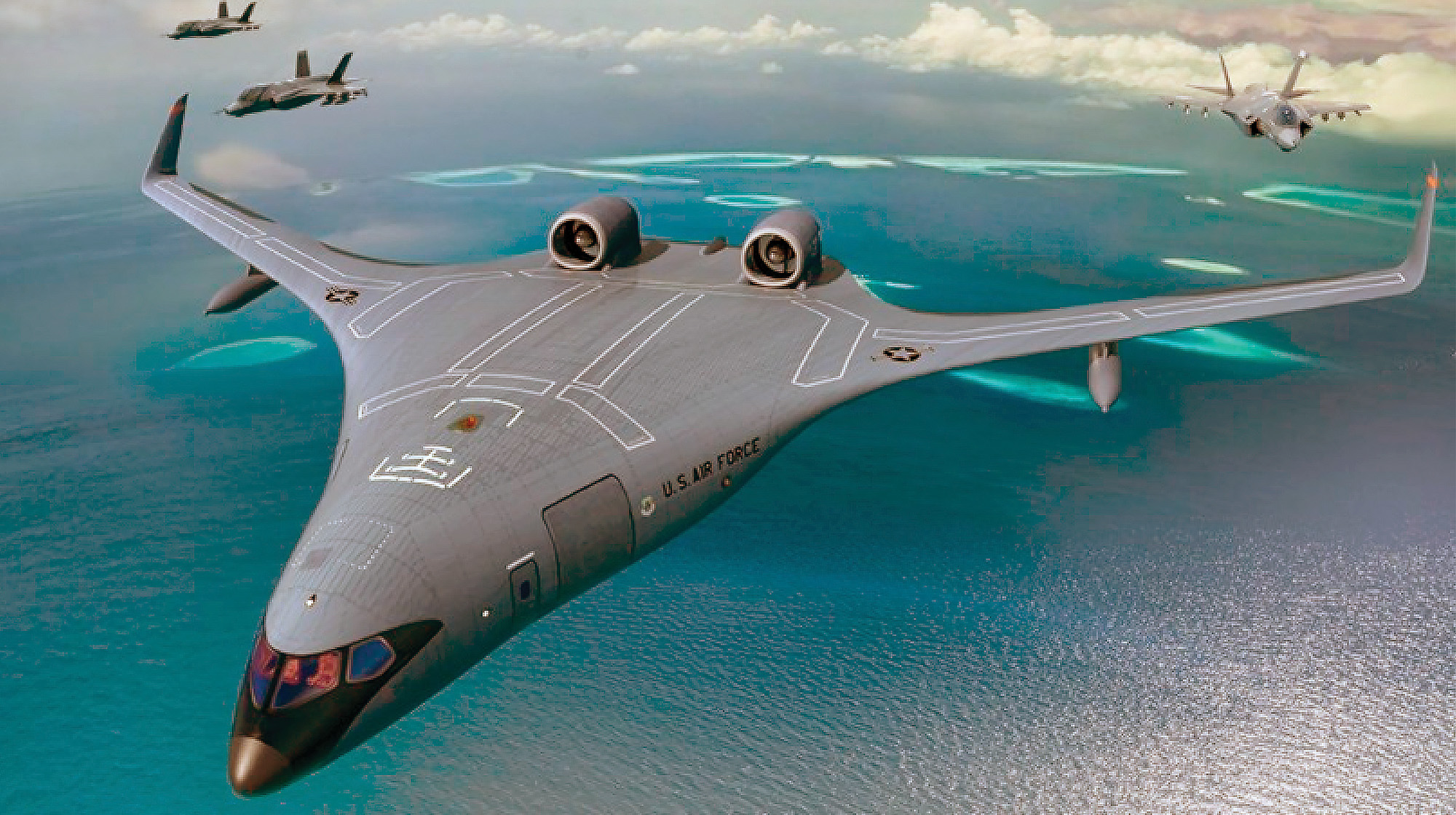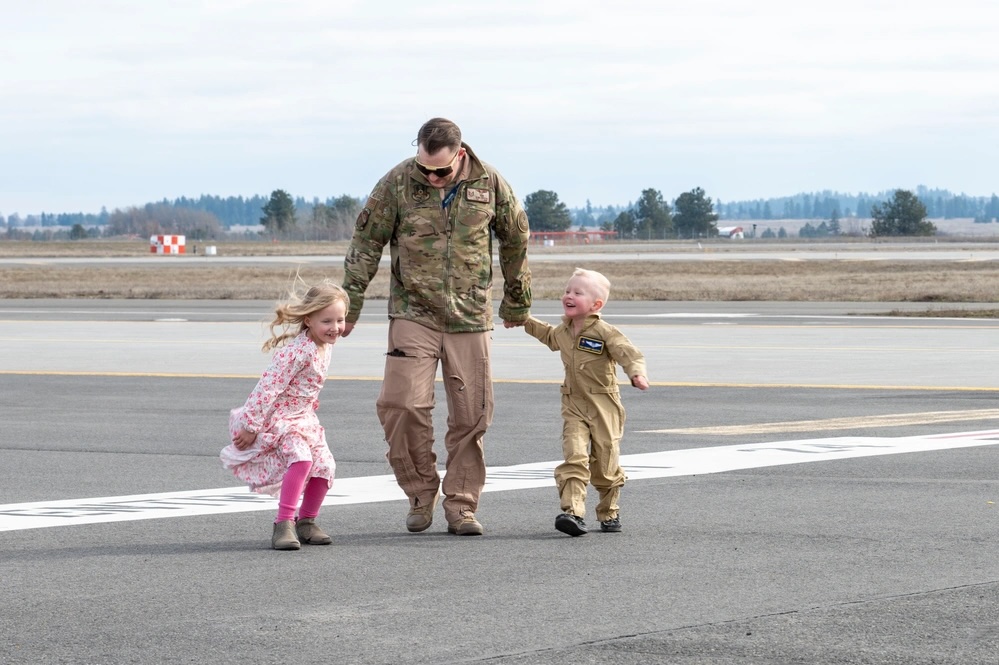The recent Ukrainian drone strike on Russian bomber bases is raising alarm among U.S. officials, who worry that American military installations worldwide are increasingly vulnerable to attack.
The daring June 1 mission, nicknamed “Operation Spiderweb,” has prompted Defense Secretary Pete Hegseth and Chairman of the Joint Chiefs of Staff Gen. Dan Caine to review the U.S. military’s base defense systems and identify counter-drone technology they could speed to installations at home and abroad.
“Cheaper, attritable, commercially available drones with small explosives represent a new threat, as was exemplified in that operation,” Hegseth told Senate lawmakers June 11. “It’s a critical reality of the modern battlefield that we have a responsibility to address.”
Defense experts say the drone threat represents only part of a larger, looming problem: U.S. air bases in the Pacific are increasingly vulnerable to air attacks.
For the past year, defense experts have warned that the Air Force has underfunded investments in air base defense for its fixed installations in the Pacific while China’s arsenal of cruise and ballistic missiles, along with its offensive drone capability, continues to grow.
To address the issue, the Air Force should explore fielding its own missile defense interceptors and invest heavily in rapid runway repair, blast-resistant shelters, and other passive measures to ensure it can launch fighter sorties even while under repeated bombardment, researchers at RAND Corp., a federally funded think tank, recommended in a recent study.
A Jan. 7 Hudson Institute report and a paper published last summer by the Air and Space Forces Association’s Mitchell Institute for Aerospace Studies echoed similar warnings that American air base defenses inadequately protect against missiles and drones, especially in the Pacific.
Air base defense has long been a complex problem for Air Force leaders. Most of its missile interceptor protection, such as Patriot and other active defense systems, come from the Army, which must protect its own force as well. The Air Force has more control over its own investments to harden air bases against attack, but passive defenses often rank low on the budget priority list when competing against the F-47 and other expensive aircraft modernization programs.
In March, former Air Force Secretary Frank Kendall said he had favored cutting the F-47 fighter program—one of the service’s highest acquisition priorities—to afford other initiatives like air base defense. The Army’s limited number of Patriot and Terminal High Altitude Area Defense, or THAAD, systems won’t be enough to defend fixed air bases and support the Air Force’s agile combat employment strategy of spreading forces across temporary, austere air bases, he said.
Dispersing forces can decrease vulnerability to attack, but ACE locations won’t be invisible to China’s space-based targeting systems. China has placed hundreds of satellites in orbit to form a network designed to track U.S. and allied forces in the Pacific.
“If we leave our bases vulnerable to attack, the F-22s, the F-35s, and the F-47s will never get off the ground,” Kendall said on the Defense & Aerospace Report podcast.
Tracking Foreign Stockpiles
While the U.S. and its allies should not discount the threat of Russian military strikes on European bases, it may take Moscow years to reconstitute its long-range strike capability after three years of war against Ukraine, experts say.
On the other hand, China over the last several decades has poured funding into long-range cruise and ballistic missiles that threaten U.S. air bases throughout the Pacific, RAND argues. It has also demonstrated drone swarms and aims to be the “preeminent producer and user of such systems,” the report said..
“China is capable of attacking all U.S. bases in the Indo-Pacific region,” researchers wrote. “Although such vulnerabilities are well-known, air base defense has not kept pace with the continued technological threats to air bases and other military installations.”
While China does not have an unlimited supply of missiles, since 2012 it has increased its inventory “more than fivefold for launchers and nearly fourfold for total missile numbers,” RAND said.
For instance, China’s stockpile of intermediate-range ballistic missiles, which can travel up to 3,500 miles, has increased from just 20 missiles in 2012 to 500 missiles in 2023—a 2,400 percent increase, according to RAND. Researchers also noted similar upticks in medium-range ballistic missile launchers and missiles, which can travel up to 2,100 miles. Those ranges may have grown, thanks to technological advances, RAND added.
In comparison, Kunsan Air Base in South Korea, the closest U.S. Air Force installation to China, sits less than 250 miles away from the Chinese coast across the Yellow Sea. Andersen Air Force Base, a strategic outpost on Guam that is expected to be a key staging area in a future Pacific conflict, is fewer than 2,000 miles away.
Limits of Army Air Defenses
While Pentagon investments in missile defense systems remained steady between 2019 and 2024, experts maintain that the Army’s force-protection capabilities and capacity may not be aligned with the needs of air bases.
“It appears that the Army has prioritized ground-based air defense for Army units, first and foremost,” said J. Michael Dahm, who researches aerospace and China at the Mitchell Institute. Dahm authored the July 2024 policy paper that discusses how a lack of resources and funding has caused Air Force base protection, especially in the western Pacific, to atrophy over the last 30 years.
Agile combat employment means Air Force units will “move around theater to find places that they can operate from, probably for a short period of time, pick up and move somewhere else.” said Dahm, a retired Navy captain.
“There could be greater investment in short-range air defenses,” said Dahm, adding that the Army should invest in systems that can be loaded onto a Humvee.
Daniel Karbler, a retired Army lieutenant general, sees things differently.
“I would challenge somebody in the Air Force to tell me what air base doesn’t have coverage,” said Karbler, a senior adviser for the Center for Strategic and International Studies’ Missile Defense Project.
Karbler, who commanded the Army’s Space and Missile Defense Command in 2019 as well as the Pacific-focused 94th Army Air and Missile Defense Command from 2012-2014, said Army air defense leaders are recovering from the service’s decision in the late 1990s to get rid of short-range air defense battalions.
Over the past several years, the Army has funneled resources toward air defense to rebuild a huge gap in short-range defenses,” Karbler said.
“Yes, we protect our Army forces, but not every infantry platoon or armored platoon, or even company, is going to have an air defense branch element,” Karbler said. “We have really pushed down counter-drone technology and capabilities, and we train these maneuver guys on using these systems, because we can’t do it all. . . . That’s part of what the Air Force needs to look at, too.”
Cheaper, Air Force-Controlled Missile Interceptors
RAND recommends that the Air Force “conduct a serious cost-benefit analysis of fielding its own active defense capabilities, ones that are tailored for air base defense in Pacific and European threat environments,” the report states.
“‘Free’ defenses provided by the Army are understandably difficult to turn down but may simply be too limited in number and face too many compromises in capability to provide much real-world utility to a dispersed basing posture,” RAND wrote.
The reality is that long-range systems are extremely expensive. A single Patriot missile costs $3.8 million, and THAAD missiles cost about $8.4 million each, Dahm wrote in his policy paper. The Air Force has evaluated comparatively cheap air defenses since 2022 and has concluded that the National Advanced Surface-to-Air Missile System could be a more cost-effective option. The NASAMS, which features repurposed AIM-9X and Advanced Medium-Range Air-to-Air Missiles, can deploy on C-130 cargo planes and consists of just three components: a radar, a fire control center, and a canister launcher.
Ultimately, the Air Force would need to invest in technology with a much cheaper cost per shot such as laser and microwave systems or even cannon-fired, maneuverable 30mm to 155mm projectiles, Dahm said. The service has researched directed energy weapons for years but has not widely deployed them.
“There is great promise in maneuvering projectiles,” he said. “The threat is coming from a particular direction, you fire the maneuvering projectile in that direction, and it can maneuver within certain parameters as the inbound cruise missile or threat maneuvers in front of it.”
An Army spokesperson told Air & Space Forces Magazine that the service’s integrated air and missile defense is “undergoing the most significant modernization in its history” by adding troops and fielding the Integrated Battle Command System. IBCS is designed to improve the way sensors and shooters are integrated across the battlefield to increase capacity and depth.
Over the next several years, the Army is planning significant fieldings of THAAD and IBCS-adapted Patriot batteries, the Mobile Short Range Air Defense System, counter-drone weapons and other air defense systems, the spokesperson said without elaborating.
Experts say the Air Force should also prioritize funding so-called passive defenses that make installations harder to destroy. The service has redirected hundreds of millions of dollars from passive defenses to higher-priority initiatives in recent years. It changed course to secure about $1.4 billion in fiscal 2024, researchers said.
While the uptick in funding is a good start, experts say it must continue. Air Force leaders should be taking advantage of the “significant momentum in Congress for increases and improvements to air base defense,” RAND recommended, adding that the service “should not be seen as dithering in air base defense investments, especially passive defenses.”
The RAND report was requested by Pacific Air Forces and the recommendations were presented to the Air Force last fall. The Air Force did not provide comment to Air & Space Forces Magazine by press time.
Hardened Aircraft Shelters Needed
In 2004, Pacific Air Forces did begin to recognize the growing threat from China and advocated for hardened shelters at Andersen to protect stealthy B-2 bombers and F-22 fighters at a projected cost of $1.8 billion. But Air Force officials canceled the proposal due to a lack of funding, Dahm wrote in his policy paper.
Two decades later, China’s military has built hundreds of hardened aircraft shelters while the U.S. has built a handful, the Hudson Institute said in its own report earlier this year.
Hardened aircraft shelters cannot survive a direct missile strike, but they are capable of protecting against cluster munitions tucked into ballistic and cruise missiles, Dahm said.
“If I can build a really substantial, hardened concrete shelter with ventilation and plumbing and the whole nine yards for $4 million, that hardened aircraft shelter can sit there in the Pacific for decades,” he said. “But if I fire … two Patriots at every inbound ballistic missile, that is $8 million in engagement, and there is no guarantee that I am actually going to hit that.”
Keeping Runways Operational
Even if every aircraft survives an attack, cratered runways can still shut a base down, Dahm said.
Refurbishing runways is also vital to tanker aircraft that need more space to take off and land. And without tankers, combat forces can only fly so far.
The Air Force has been developing its Expeditionary Airfield Damage Repair program since 2021. Initial requirements called for the capability to deploy the equipment on four C-130s so a 16-member crew could resurface up to 18 craters in 24 to 36 hours, according to the Mitchell Institute paper, which added that the service should try to slash repair times.
That creates its own cost tradeoffs, Dahm said.
“I could probably guess that a rapid runway repair kit for a rapid runway repair team, and then the personnel that go with it would probably cost [roughly $6 million] … to enable that $80 million aircraft,” he said. “What is it worth to keep those aircraft flying and effective, to protect them and then enable them to generate those combat sorties, so that they can deliver effects?”
To Dahm, air base readiness has declined because recent Air Force leaders have only experienced war in countries where the U.S. enjoyed air superiority.
“The danger is something that they can understand intellectually, but it is beyond their operational experience,” he said. “Regrettably, I think it will take an attack where dozens of aircraft are destroyed on the ground, and God help us, hundreds of young men and women are killed.”
“And someone will say, ‘Why didn’t we invest more in air base defense?’” he said.

